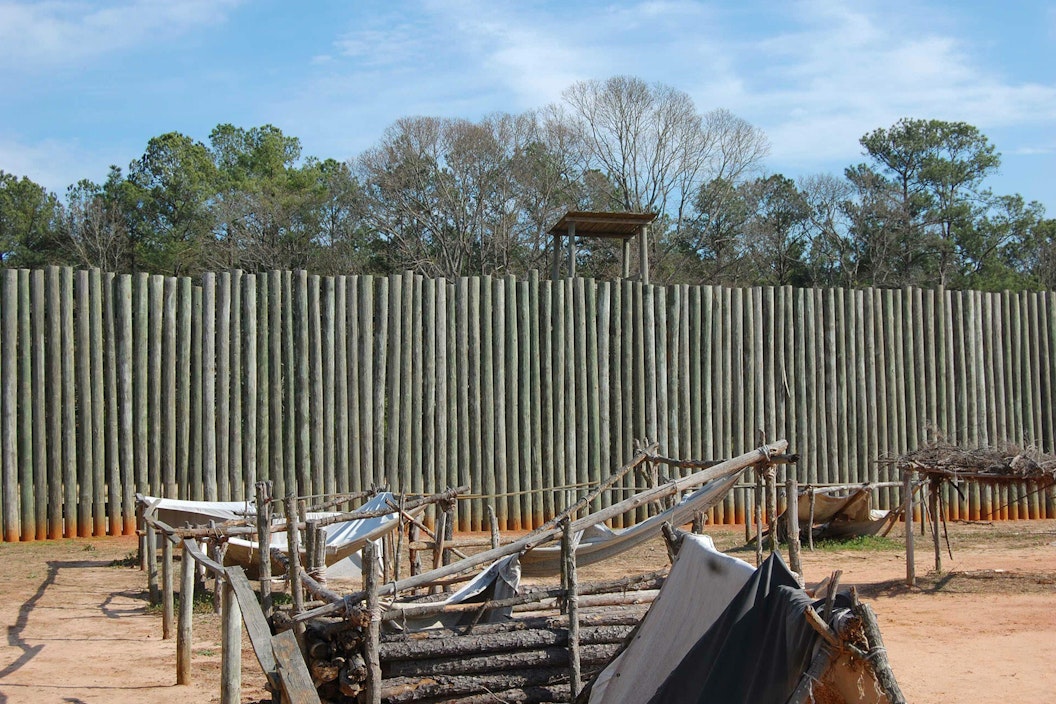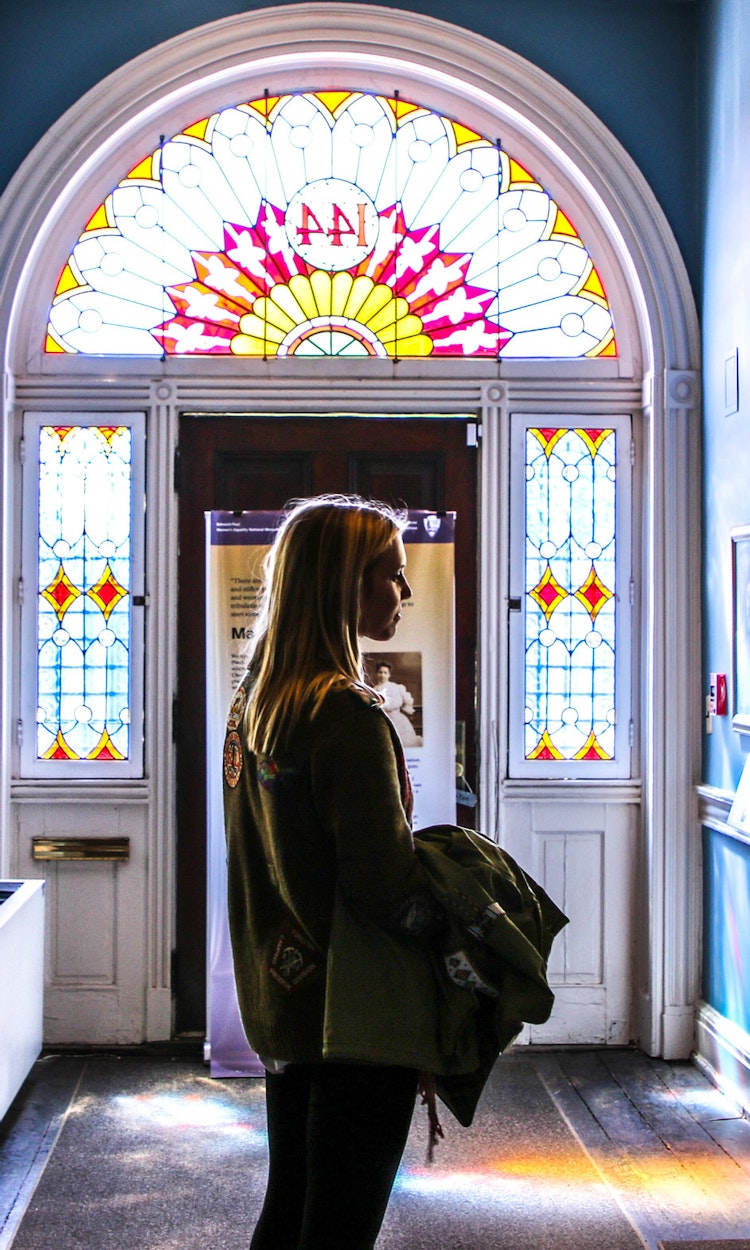
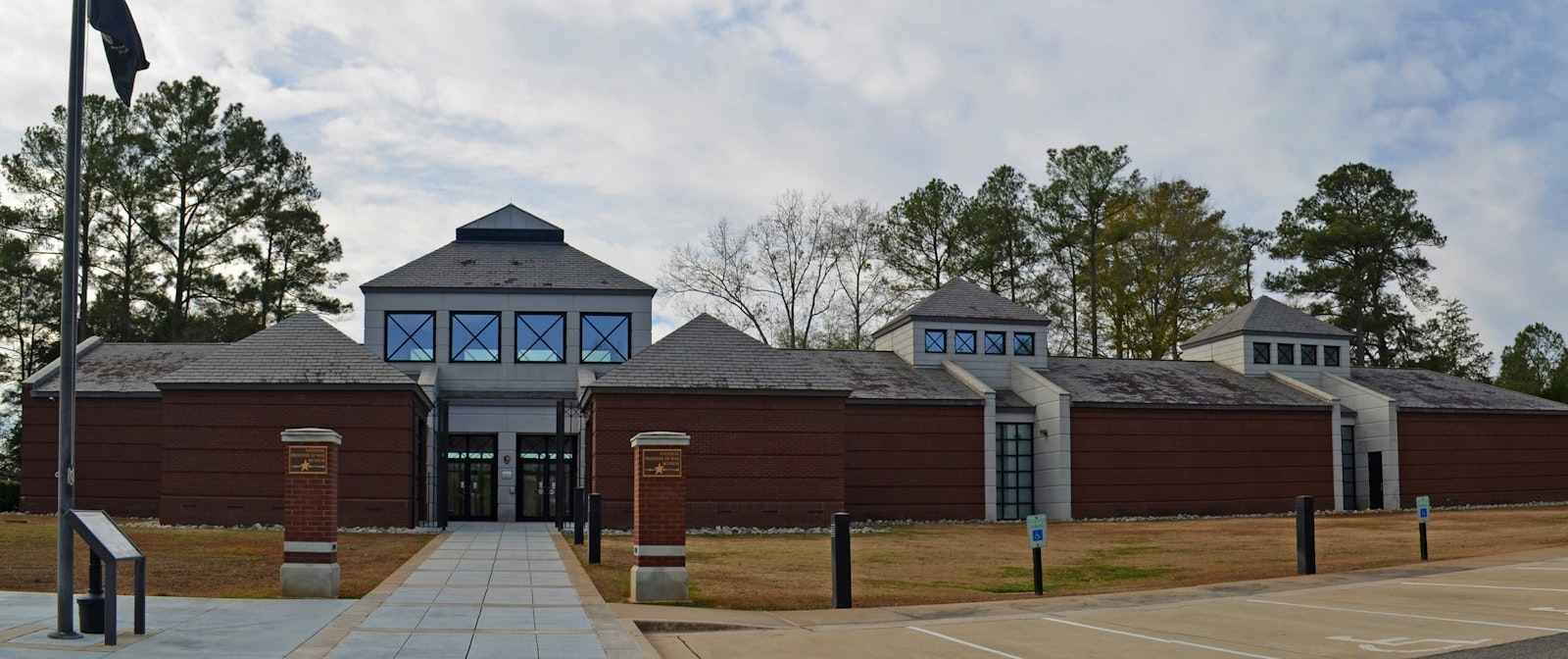
.
.
Thanks to a grant from NPF, visitors can now understand how the Andersonville National Historic Site was preserved and commemorated through the efforts of the Woman’s Relief Corps and the Ladies of the Grand Army of the Republic. The funds enabled the park to engage the work of Andrew Bellacomo — a Public Lands Corps intern — to partner with the site for research around the topic. Together with the park and its partners, Bellacomo created a temporary exhibit for the National Prisoner of War Museum on the subject, designing the layout and curating the artifacts that embody stories rarely shared up to this point, with the public, as well as a series of social media posts to share the research findings with the public.
Preserving Andersonville
Andersonville National Historic Site commemorates the site of Camp Sumter — a stockade built 18 months before the end of the Civil War to hold 10,000 Union Army prisoners captured by Confederate soldiers. In its 14-month existence, 45,000 Union Army prisoners arrived at the site, and a cemetery — now Andersonville National Cemetery — was created just outside the prison’s walls for the thousands who died there. The National Prisoner of War Museum opened here in 1998, honoring all U.S. prisoners of war in all wars.
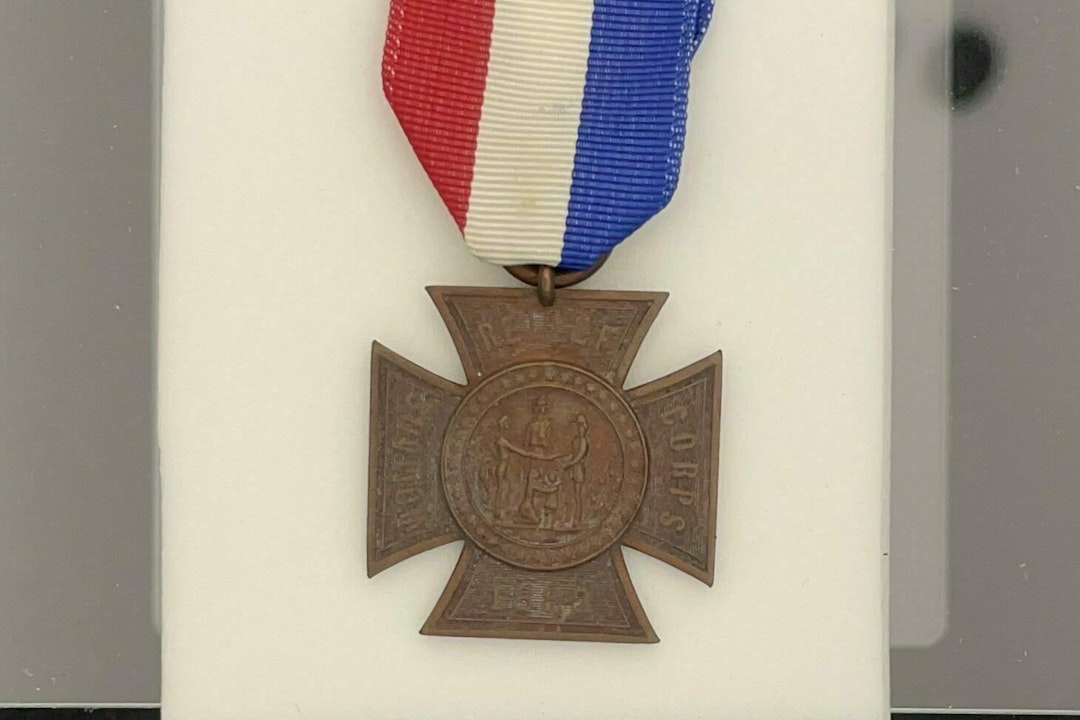
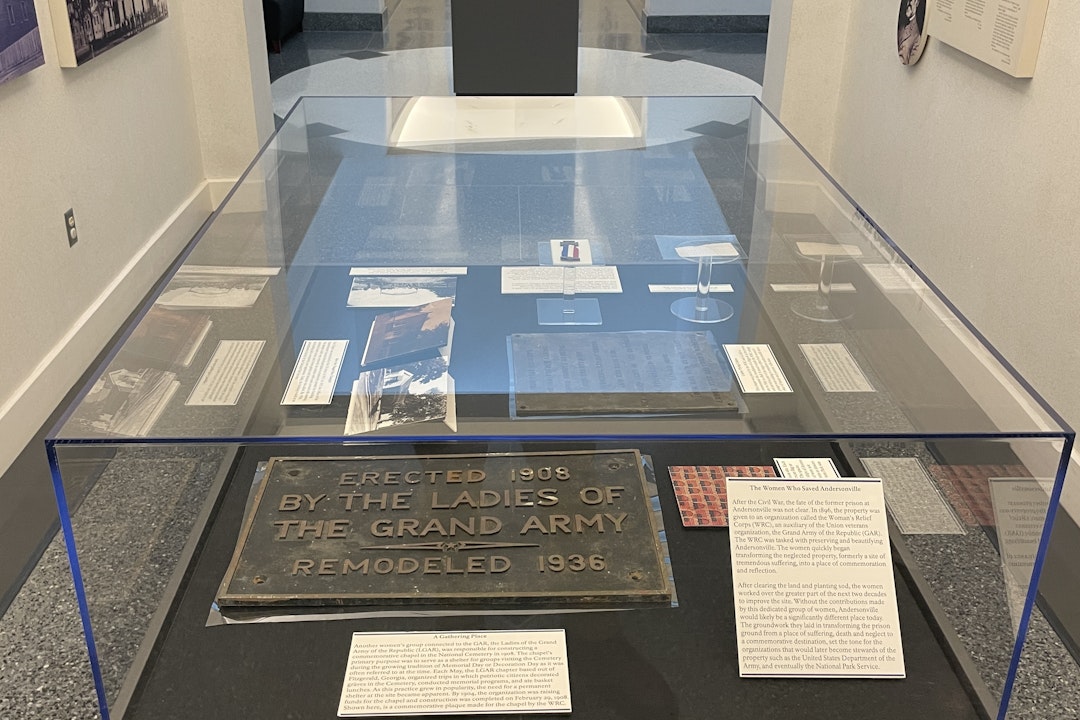
The National Park Service (NPS) now preserves the history of Camp Sumter and Andersonville National Cemetery, but early preservation efforts just after the war were led by women’s groups, including the Woman’s Relief Corps and the Ladies of the Grand Army of the Republic. After the Civil War and into the early 1900s, these groups ensured that the site was preserved and memorialized. Bellacomo notes “historic preservation was a new concept in the decades after the Civil War, and it was a movement that was primarily led by women.”
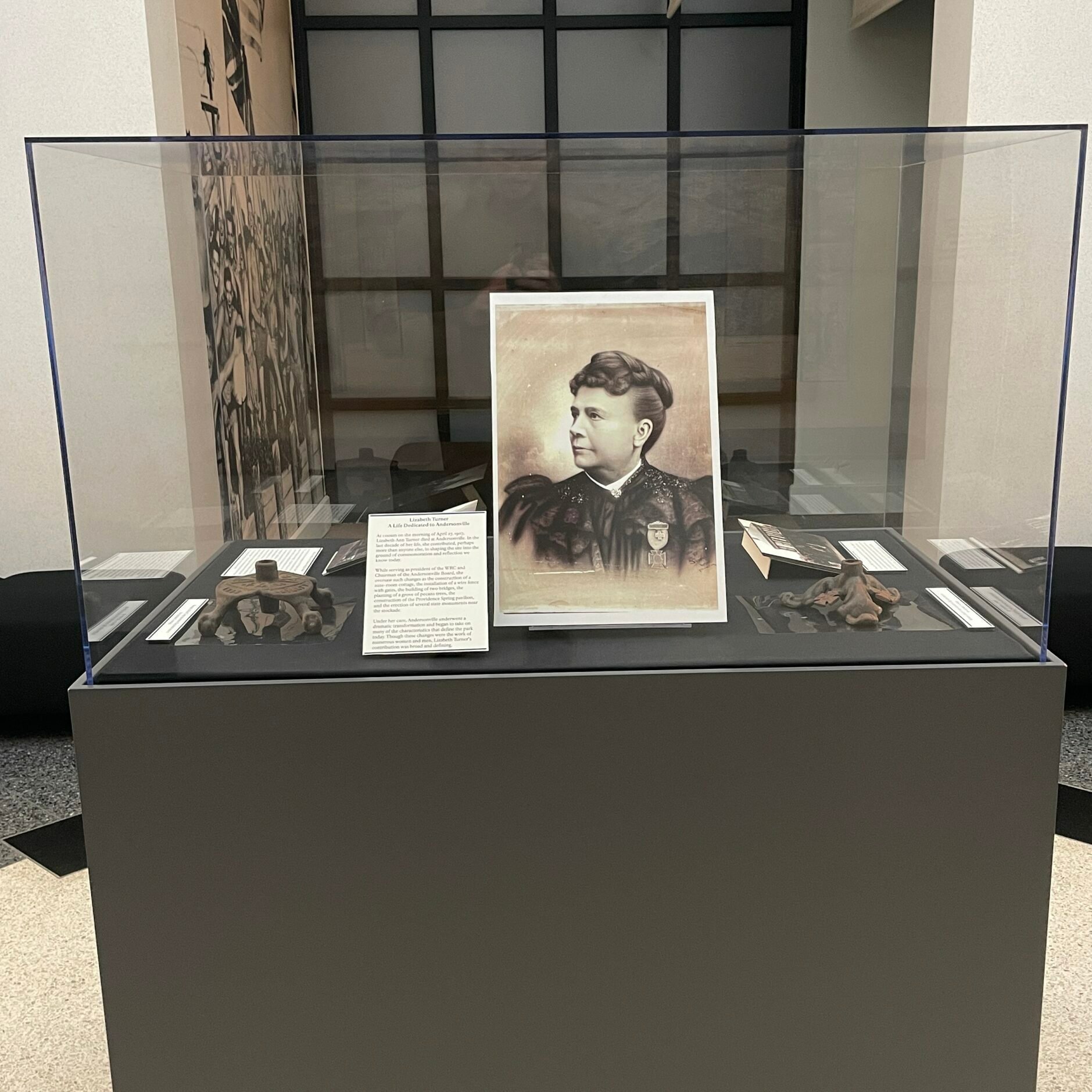
And Andersonville’s preservation follows in a legacy of women-led preservation efforts, says Bellacomo: “while some military commemoration was done after the American Revolution, the formation of the Mount Vernon Ladies Association in 1853 and their efforts to preserve President George Washington’s home is often considered the birth of historic preservation in America.”
For Bellacomo, research included a trip to the Georgia Archives, the archives of partner organizations the Woman’s Relief Corps and the Ladies of the Grand Army of the Republic, and relaying with the Springfield Archives in Illinois, as well as the park’s own archives to explore this fascinating history. The exhibit produced by these efforts displays artifacts such as a Woman’s Relief Corps badge from the time, and highlighted the story of Lizabeth Ann Turner, the president of the Woman’s Relief Corps and Chairman of the Andersonville Board who oversaw a dramatic transformation of the site.
Related Programs
-
 Women in Parks
Women in Parks

